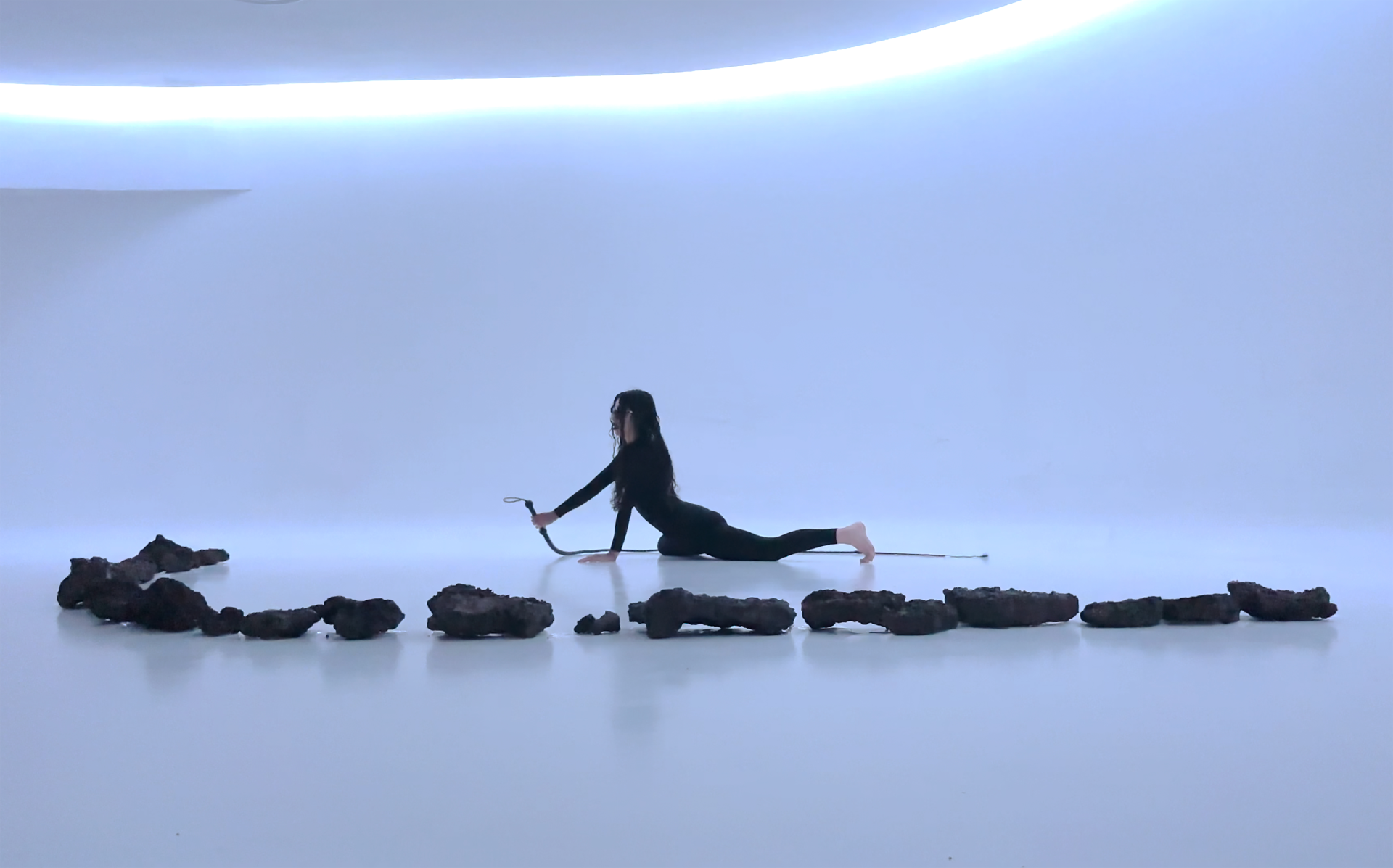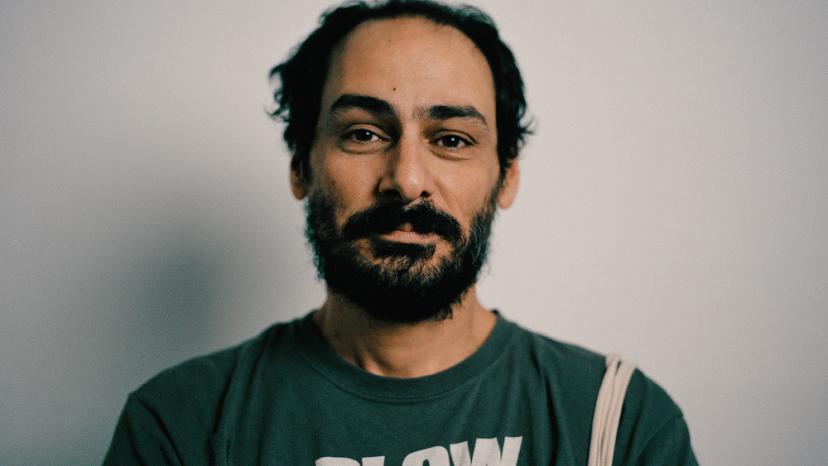What does »Koaxula« mean?
Natalia Escobar: It’s a made-up word. We did a cutup exercise where we worked with different letters. Since our idea was to reinvent narratives and to create hybrid work it seemed appropriate to use a made-up word.
How did you get to work together?
NE: The curators Sally Montes and Rogelio Sosa had a program called »El Sonido Que Atraviesa« (»The Sound that Permeates«) in the CCD, the Centro de Cultura Digital in Mexico City. They invited us to have a residency and create a site-specific project to close this curatorial program.
The title of your new performance is »Deslenguadas«. I found several translations of that term from »smooth-talking« to »unwritten«. How would you translate it?
NE: The word »Deslenguadas« literally means »without a tongue« or »cut out tongues«, metaphorically conveying the loss of voice and the violence faced by those who have been historically marginalized, colonized, and oppressed. Systems of belief have been imposed; languages have been destroyed. In »Deslenguadas«, dancers represent those who had their »tongue cut out« and are now finding their voices again. This is the journey to get your voice back, your tongue back.
Daniela Huerta: In the creation of our myth »Deslenguadas«, these tongues were thrown into the abyss of a serpent's mouth, the Ouroboros. The tongues became petrified and remained preserved in a sleeping state, as if they were incubating inside the serpent's mouth, guarded by rows of dangerous teeth — a sort of »Vagina Dentata«. Through the sonic energy of their whips, enabling passage between different dimensions, Deslenguadas travel into the underworld, seeking the destructive and transformative forces, the sexual power, and the words of severed tongues from various female entities that inhabit within. It is a return to the realm of the wild, a reconnection with their dark, animal side, and the buried power of the Great Ouroboric Mother.
Will the performance you’re going to present in the Kuppelhalle be a further development of what you did in Mexico?
NE: Yes, it will be. Since Mexico, we’ve been enhancing the sound composition, incorporating live recordings from the CCD performances and processing them through various synthesis. For Kuppelhalle, we’ll continue to shape the composition and performance to the history and sonic qualities of the space. Collaborating with new dancers will bring a different energy to the piece. We will also expand the use of the whips, not just acoustically but in a performative way, as there is still much to explore.
DH: We will be collaborating with the German movement director Marie Zechiel and with three Berlin-based dancers. This will bring something quite different from the piece we presented in Mexico because of their interpretation of the myth in a different cultural context. The narrative acquires a distinct life of its own when expanding through collaborations in specific locations. Also, presenting »Deslenguadas« at Kuppelhalle, a mourning hall and the first crematory in Berlin whose presence testifies to the changing conception of death, will definitely impact how we develop our piece in situ.






